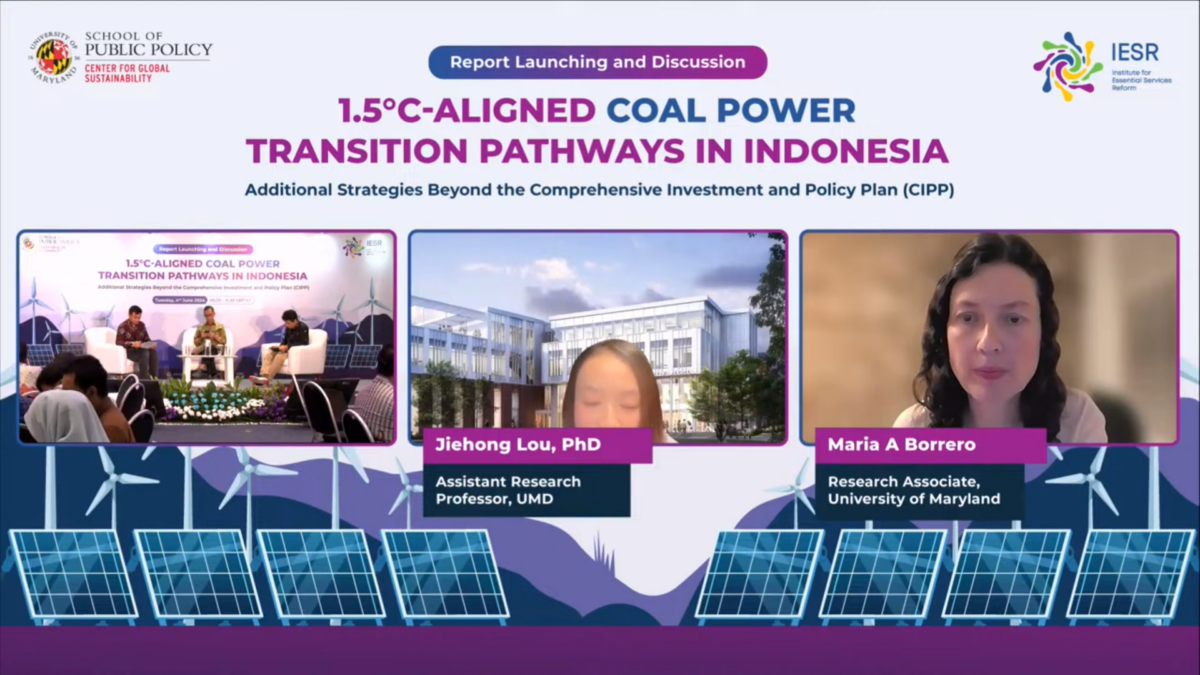Jakarta, 4 June 2024 – Indonesia stole the world’s attention when it received Just Energy Transition Partnership funding from IPG countries at the end of 2022. Indonesia is facing challenges in its energy transition process, one of which is because the composition of Indonesia’s energy sources is dominated by fossil energy up to 60-70 percent. The large fossil energy mix reflects other factors such as a large fossil energy infrastructure. Under these conditions, formulating a plan towards zero emissions requires a comprehensive approach so that the costs required for the transition can be reduced and energy system reliability and energy affordability can be maintained.
The Institute for Essential Services Reform (IESR) and the Center for Global Sustainability of the University of Maryland are reviewing Indonesia’s energy situation, and testing scenarios to bring Indonesia in line with the Paris climate target, namely limiting the increase in earth’s temperature to 1.5 degrees Celsius.
Fabby Tumiwa, Executive Director of IESR at the launch of the report “Coal Electric Power Transition Pathways in Line with the 1.5 ℃ Target in Indonesia” on Tuesday, June 4th 2024, explained that this report covers on grid and off grid CFPPs by implementing several strategies to reduce operating capacity (flexible operation), early retirement, biomass cofiring, renewable energy substitution, construction cancellation, electricity grid connection, and carbon capture storage technology.
“This study provides a bottom-up strategy for reducing coal CFPPs based on the characteristics of existing CFPPs. “This road map is complementary to the JETP plan,” said Fabby.
Nathan Hultman, Director of the Center for Global Sustainability, University of Maryland explained the challenges faced by Indonesia as a coal producing and consuming country.
“Indonesia’s challenges are unique, there is an opportunity to push climate action that will bring other co-benefits such as (green) job growth, improved air and water quality, and protection of natural resources,” he said.
Maria Borrero, Research Associate of the University of Maryland, author of the report “Coal Electric Power Transition Pathways in Line with the 1.5 ℃ Target in Indonesia” said that JETP Indonesia’s CIPP (Comprehensive Investment and Policy Plan) document shows a more ambitious target. Unfortunately, it is not yet align with the 1.5 target. To bring it into line with the Paris climate target of 1.5℃ a more comprehensive plan is needed.
“One of the striking factors of the Indonesian energy system is the existence of quite a large number of captive CFPPs and currently their capacity reaches around 15 GW. “In the next few years there will be an additional of 6 GW currently under construction,” said Maria.
The age of captive CFPPs, which are still quite young (most captives were built after 2016), is also a challenge in itself because the infrastructure still has a long technical lifespan. Maria added that to execute the JETP target there are a number of uncertainties, such as uncertainty about funding fulfillment and uncertainty about methods for ensuring emission reductions.
Akbar Bagaskara, IESR power system analyst, explained that the current condition of Indonesia’s electricity system is that it is expected that Indonesia’s basic generation costs will fall by 21% in 2030 and 75% in 2050.
“Greater integration of variable renewable energy requires the deployment of storage technologies, expanded and improved grid infrastructure, and stable and flexible unit operations,” he said.
Joseph Pangalila, Deputy President Director of Cirebon Power, during the panel discussion session, appreciated this study. This could be a good initiative in efforts to accelerate the energy transition.
“I hope that this study can be followed up until implementation. I personally want to see what technology can substitute coal,” said Joseph.
Arionmaro Asi Simaremare, Energy Transition Manager at PT PLN, added that growing captive capacity outside Java requires inertia.
“One way to eliminate the need for captives is to move to using renewable energy or you can switch to decarbonization by instead of just supplying coal, you can mix it with local renewable energy (gas, solar, wind) so that the captive process can be further reduced. use of coal,” he said.

